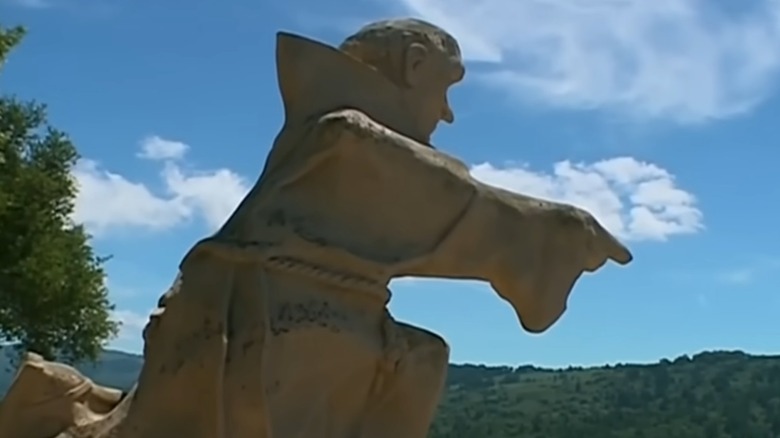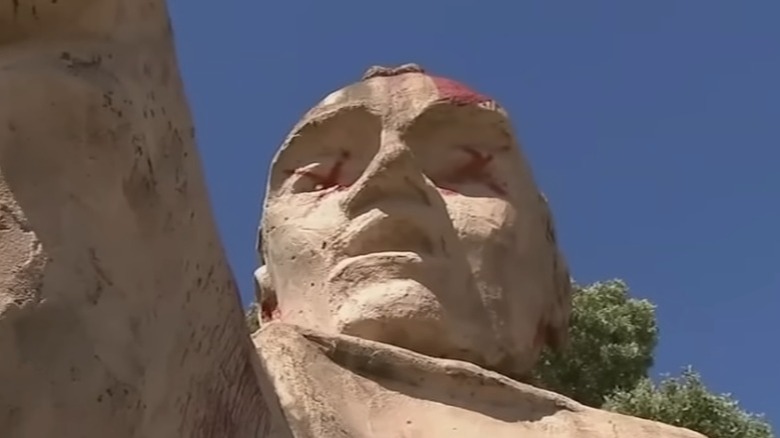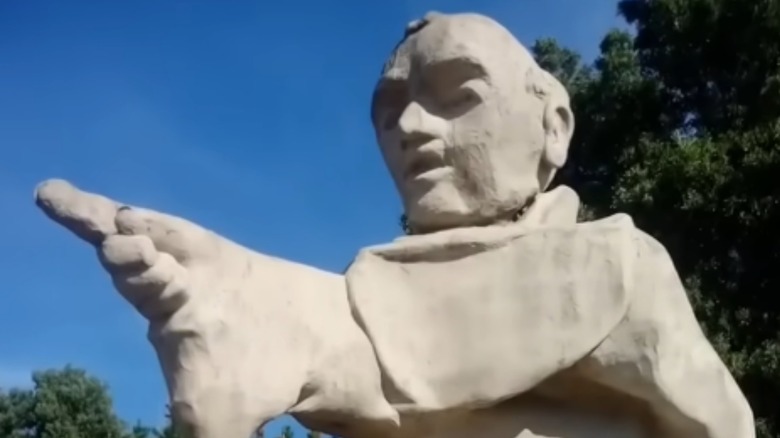After 50 Years Of Being There, San Francisco Drivers May Notice Something Big Is Now Missing
Interstate 280 is one of the biggest and most important motorways in the Bay Area, running from San Jose through the center of the San Francisco Peninsula and into the heart of the Golden City itself. The road has often been touted as "The World's Most Beautiful Freeway." Nestled between urban hubs and the Santa Cruz Mountains, the landscape has no doubt factored heavily into the freeway's reputation, but there are also dozens of stunning and memorable man-made sites that motorists can appreciate along the drive: From the Mission in Santa Clara to the Crystal Springs Reservoir to the San Francisco city skyline itself. But it appears that one major landmark will no longer be there.
The 26-foot-tall concrete and rebar statue of the Spanish Catholic saint, Junípero Serra, has been torn down. This came as a huge surprise to many of the locals, as the massive stone statue has stood sentinel on the hilltop in Hillsborough for half a century. Understandably, many might be curious as to why this happened and what the response has been to the loss of this gigantic and imposing figure.
Why was the statue taken down?
The statue was created in 1975 by artist Louis DuBois, funded by San Francisco's own Mission Dolores as well as several other Catholic missions from across California, and it has been there ever since. You might understandably be wondering who is responsible for the removal of this landmark and why the gigantic concrete statue of Junípero Serra was torn down. It turns out, the California Department of Transportation (Caltrans) was the one who removed it. "The installation did not meet current Transportation Art Program requirements and had been a frequent target of graffiti and vandalism," Caltrans district spokesperson Jean Crawford reportedly told SFGATE.
Caltrans has very specific guidelines as to what qualifies as transportation art. Many of these guidelines are practical, stating that roadside art cannot contain moving parts, reflective surfaces, illumination, or anything else that might be distracting to drivers or restrict visibility and inhibit their ability to drive safely. Some of these rules apply to maintenance and safety requirements, ensuring that they will hold up to the elements and can't physically fall into the road. Some are to protect the environment, restricting art from trees, rocks, and other natural features. Very little information was provided as to which of these rules the statue of Junípero Serra failed to comply with, or why Caltrans decided to tear it down now, after being there for decades. SFGATE also reported that Caltrans stated the statue was "evaluated for eligibility in the California Register of Historical Resources," but that it was deemed ineligible.
The response has been mixed
The statue of Junípero Serra hasn't been everyone's favorite addition to the interstate scenery, however, as Junípero Serra is a controversial figure. Several Catholic officials were less than pleased with the way Caltrans went about removing the statue, arguing that they wished Caltrans had reached out and contacted the church before removing the statue. SFGATE reported that the executive director of communication for the Archdiocese of San Francisco, Peter Marlow, wrote that "It is incumbent upon government to be transparent and to not take actions that appear to single out particular groups in a negative way." He went on to say, "It also appears that this action was carried out in the dark of the night." Marlow also stated that several of the church's parishioners had contacted them to express concern over the religious figure's abrupt removal.
Others are less concerned to see the statue go. The massive concrete goliath was viewed by some as an eyesore, but it was the history of the man himself that was the greater issue. Junípero Serra presided over much of the Spanish colonization and mission work that took place in California in the 18th century. This resulted in grievous harm to the indigenous population and native culture. "While Serra is an important historical figure, his accomplishments as a Catholic missionary [..] are not worthy of honoring in statuary," executive director of the Association of Ramaytush Ohlone Jonathan Cordero told SFGATE. "Such an honoring offends many Indigenous peoples of California, especially the Ramaytush Ohlone, who are the original peoples of the entire San Francisco Peninsula." Arts and Culture columnist Tony Bravo of the San Francisco Chronicle seemed to concur, stating, "Goodbye, bad man. Goodbye, bad public art. This is a double win."


